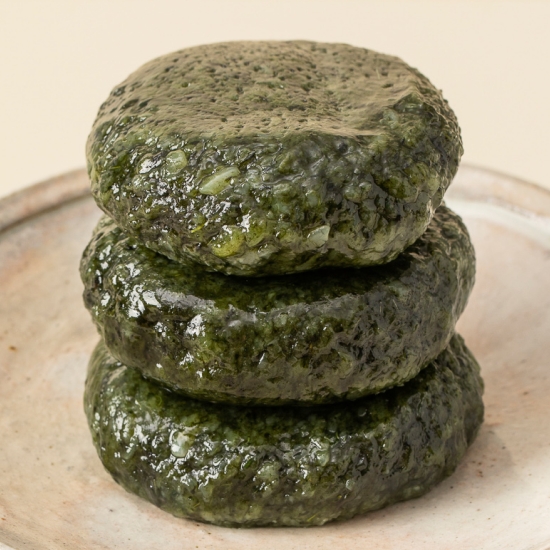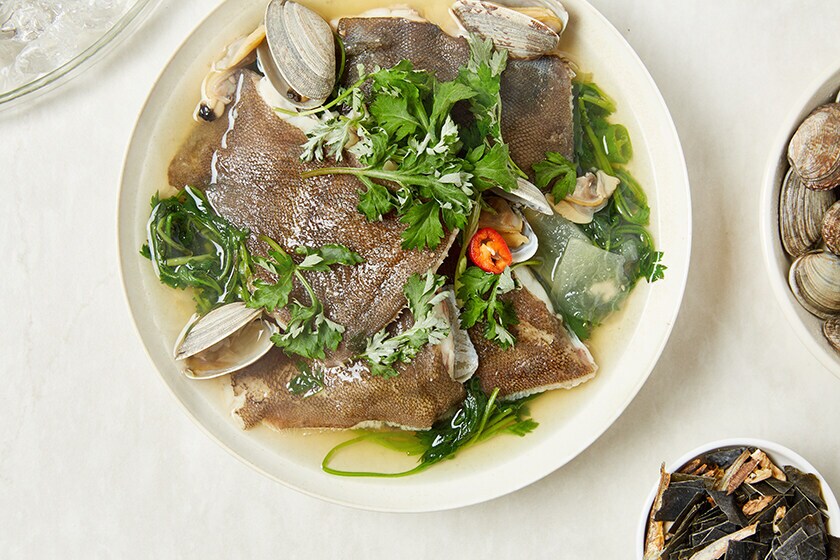Spring in Korea isn’t just about 벚꽃 (beot-kkot), cherry blossoms, or the perfect picnic weather, it’s a full-on flavor festival. As the snow melts, markets come alive with wild greens, seasonal seafood, and floral treats that you can only find this time of year. From tender greens to fresh seafood, Korean spring cuisine is all about capturing the season’s light, refreshing flavors.
So grab your chopsticks and get ready—we’re diving into five of Korea’s best springtime delights that will have your taste buds blooming!
1. 봄나물 비빔밥 (Bom-na-mul Bi-bim-bap) – “Seasonal Bibimbap”

If you could capture spring in a single dish, it would be 봄나물 비빔밥 (bom-na-mul bi-bim-bap) or ‘seasonal vegetables bibimbap’. This seasonal version of Korea’s famous mixed rice dish ‘비빔밥 (bi-bim-bap), bibimbap’ swaps out heavier toppings for a vibrant colourful mix of 봄나물 (bom-na-mul), wild spring greens packed with fresh, slightly bitter and peppery flavors.
Some of the stars ingredients include: 달래 (dal-rae) or wild chives with a garlicky kick, 냉이 (naeng-i) or Shepherd’s purse, a tiny herb with a nutty flavor, 두릅 (du-reup) or Aralia shoots, slightly bitter but addictive and 씀바귀 (ssam-ba-gwi) or wild lettuce that adds a fresh, almost citrusy taste. It’s a must-try dish that your taste buds can’t ever forget.
2. 봄동 겉절이 (Bom-dong Geot-jeor-i) – “Spring Cabbage Kimchi”

Spring brings 봄동 (bom-dong), a special type of ‘young napa cabbage’ that’s sweeter and crunchier than its winter counterpart. Instead of the long fermentation process of regular kimchi, 봄동 겉절이 (bom-dong geot-jeor-i) is a fresh 김치 (kim-chi) that can be enjoyed right away!
Mixed with 고춧가루 (go-chu-ga-ru) or red pepper flakes, 마늘 (ma-neul) or garlic, 액젓 (aek-jeot) or fish sauce, and 매실청 (mae-sil-cheong) or a plum syrup, it’s tangy, slightly spicy, and super refreshing just like the spring itself.
3. 화전 (Hwa-jeon) – “Flower Pancakes”

Flowers in spring aren’t just for admiring, they’re also for eating! 화전 (hwa-jeon) are delicate, pan-fried rice cakes decorated with flowers (yes, actual flowers), like 진달래 (jin-dal-lae), azaleas or 국화 (guk-hwa), chrysanthemums. These delicate little treats are lightly sweet, chewy, and almost too pretty to eat!
While ‘Flower pancakes’ is a direct translation, it doesn’t capture the essence of the treat. A more realistic approach could be ‘Korean floral rice cakes’ or ‘glutinous rice flower pancakes’, which are often served with sweet 꿀차 (kkul-cha) honey tea, making them the perfect springtime dessert.
4. 쑥떡 (Ssuk-Tteok) – “Mugwort Rice Cake”

Next up is the all-rounder 쑥 (ssuk) or Korean mugwort. It’s a fragrant herb that sprouts in early spring. It’s prized for its earthy texture, rich green colour, slightly bitter flavor, and is commonly used in 쑥떡 (ssuk-tteok) or chewy rice cakes infused with mugwort. It is also believed to have health benefits, often associated with purification and healing in traditional Korean medicine.
Other popular 쑥 (ssuk) treats include 쑥개떡 (ssuk-gae-tteok), steamed rice cakes with sweet red bean filling, and 쑥국 (ssuk-guk), a light soup that pairs mugwort with 된장 (doen-jang) or fermented soybean paste, some of the local favourites.
5. 도다리쑥국 (Do-da-ri-Ssuk-guk) – “Flatfish Mugwort soup”

Spring seafood in Korea? It’s next-level delicious. When spring rolls around, so does 도다리쑥국 (do-da-ri-ssuk-guk), a delicate soup made with 도다리 (do-da-ri), a mild and slightly sweet spring flounder (flatfish), and 쑥 (ssuk), a fragrant Korean mugwort and a broth of anchovy and kelp.
The magic of this dish is in its balance. The combination of the delicate fish and the herbal bitterness of 쑥 (ssuk) or mugwort creates a flavor that’s clean, slightly earthy, and incredibly refreshing. It’s the kind of dish that makes you feel like you’re sitting by the ocean, soaking in the first warm breeze of the year.
Springtime in Korea is about more than just beautiful views and aesthetics. It is also a time to enjoy the seasonal delicacies, which are all about freshness and lightness. Beyond their flavors, these dishes also carry deep cultural and seasonal significance. After all, the best way to understand a culture is to savour it.
그럼 봄 맛있게 드세요! (keu-reom bom masitge deuseyo!) – Happy spring feasting!
Written by: Ariba
Connect with us on Instagram | X | YouTube for more content, interviews, & news.














